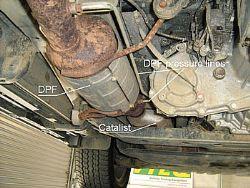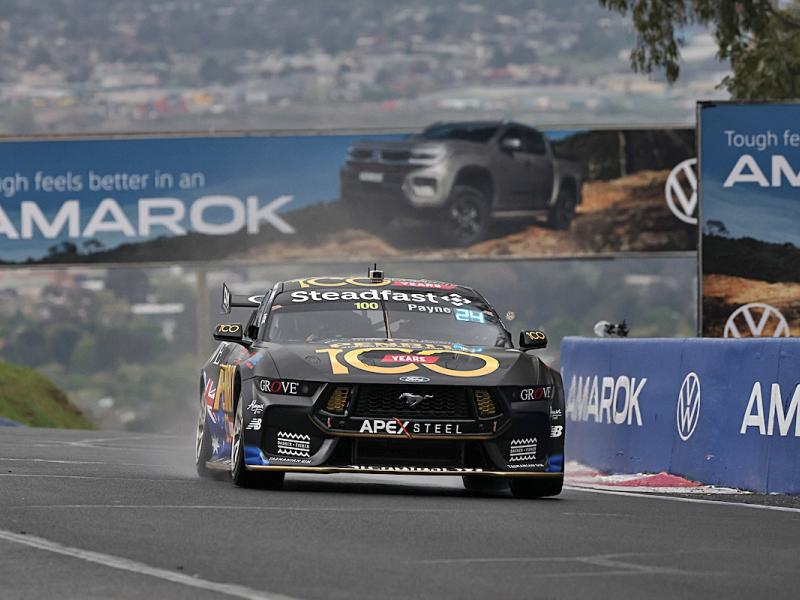Common Rail Diesel systems are going to be on all vehicles very soon, from small Hybrid Diesel cars to large truck engines. Currently no other big changes are in the pipeline for Diesel technology. This knowledge will update your workshop staff for many years to come. The repairs will be more the domain of the ‘normal’ automotive workshop instead of the specialists as the workload will be too high for them. Also the components used are simple to understand and replace but of very high precision, and very high cost. Simply swapping parts is going to be impossible, as the most important items are vehicle coded. Diesel Emissions In every combustion chamber there are ‘dead’ spots, where the combustion stays too cold or where there is not enough swirl to make the air mix with fuel properly. The Diesel (HCs) will fall apart in Hydrogen (H2) and Carbon (C). The H2 will find oxygen as it is very reactive, but the carbon will not. The carbon will form black flakes, visible as black smoke. The larger the particle, the better visible they are. The more particles there are in the emissions the more visible (light absorption) the smoke becomes. K Value The emissions on a Diesel engine are measured by light absorption. The amount of light absorbed by the particles is an accepted standard measure for the engine’s emissions. Light absorption is measured as a percentage of light arriving at the other side of a tube. To make sure that all equipment comes up with a comparable value the light absorption percentage is calculated back to an opacity co-efficient expressed as K. In Europe the in service limit of most countries is K=2.5m-1 for non-turbo and K=3m-1 for turbo charged models. A well-maintained non-catalyst equipped vehicle with mechanical injection and turbo will produce around K=1.5 to K=2.5 during a snap acceleration emission test. Catalyst Most modern diesel engines are equipped with a catalytic converter. Simply explained, the catalyst in the converter promotes the chemical reaction between unused fuel (HCs) and air and between partially burned diesel (carbon) and air. The Catalyst greatly improves the emission quality and reduces the particulate levels from the emissions. An average electronic controlled DI Diesel engine (non-common rail) with catalyst would produce around K=0.5m-1 to K=1.5m-1 . A badly maintained engine with for example low compression, worn injectors or incorrect timed injection (e.g. pump cam ring worn as result of water, or timing out as result of incorrect viscosity bio fuel), or stuck EGR valve can quickly block the catalyst. The emissions will be very high as a result and the performance of the engine will be down. A common rail Diesel engine equipped with only a catalyst will produce even lower emissions as the injection pressures are higher and the injection control strategy is more precise. During research values of between K=0.3m-1 and K=1.4m-1, were measured on similar CR engines of different makes. Some early (< 2000) high kilometre (e.g. Taxi) CR turbo engines (no cat) are common for failing the common European emission tests (K=3m-1 ). Diesel Particulate Filter System To capture even the finest particulates in the emissions (these pose the greatest health risk) currently filters are being fitted in the exhaust, called the Diesel Particulate Filter (DPF). The filter will capture the particulates and store these. As with any filter, it gets blocked after a period of use. The filter needs to be cleaned when it is restricting the exhaust to a certain point. The cleaning process is called regenerating. Simply explained, the process of regenerating is to burn the Carbon (C) particles into a gas carbon dioxide (CO2). For this chemical reaction to take place, the filter needs heat. CO2 is a gas, so it will flow through any filter virtually unobstructed. Regeneration If the pressure across the DPF reaches a certain threshold, the ECU will initiate a regeneration procedure. The regeneration process takes place automatically when certain engine operating conditions are met. These conditions are for example that the engine needs to be up to operating temperature, and that the vehicle speed is more than 40Km/h and reasonably constant. For the high temperature in the DPF extra Diesel will be injected very late in the labour stroke. The regeneration process can also be activated in the workshop with a scan tool. Extreme caution needs to be taken while doing this in the workshop! As can be seen from the below pattern 5 injection pulses per cylinder cycle, the engine revs where fixed at 1500 RPM by the ECU without touching the throttle. The following pattern shows the injection offset in crank angle degrees during one engine cycle. ATS scope pattern zoomed in on injection cycle during regeneration. If assumed it would be that the first injection activation is at 10° before TDC, than the last would be finished 133° crank angle degrees after TDC, or 47° before BDC. This would be just after when for example the 4M41’s exhaust valve opens at 51° before BDC! Caution! It should be noted that the regeneration process makes the exhaust dangerously hot! It should also be noted that a vehicle with DPF has a higher fuel consumption than a vehicle without DPF, as a result of the fuel hungry regeneration process. It should be noted that during the +/- 20-minute regeneration process in the workshop the exhaust external temperatures rose to: • At the exhaust manifold 240°C • At the DPF outlet 480°C • At the tail pipe 285°C • A tail pipe temperature of 285°C is enough to set fire to standard emission extraction equipment. Normal emission extraction equipment is able to handle not more than around 150°C to 200°C. Also the soot (carbon particles) accumulated inside the extraction ducting after years of use could ignite at a little more than 300°C. Previously high temperature rating hoses were only used in dyno applications. In workshops they are now used as an extension of the normal hardwearing hoses during regeneration. It should also be noted that the high outside temperature of the DPF (more than 400° C) is enough to ignite paper (rubbish fire) or dry grass (grass fire) if it were to come into contact with the DPF for long enough. This is also one of the reasons why the vehicle speed needs to be sufficient before regeneration starts. Several modern Common rail vehicles measured by AECS with Cat and DPF where all emitting K=0m-1 (K zero) during the standard snap acceleration test! Opacity measured during a forced regeneration of a DPF equipped vehicle in our research centre was K=1.15m-1. It should be noted that the extra injection during regeneration causes a very high oil contamination rate. It is advisable to change engine oil after a forced regeneration. It should also be noted that normal cheap engine oil contains sulphur. Sulphur combinations in the emissions can easily block the DPF, with substances that are not transforming into gas during regeneration. The remaining ash will block the filter permanently. Care needs to be taken when changing oil on DPF equipped vehicles
Modern Diesel Emissions
Modern Diesel Emissions
Motorsport
Tuesday, 22 April 2008






